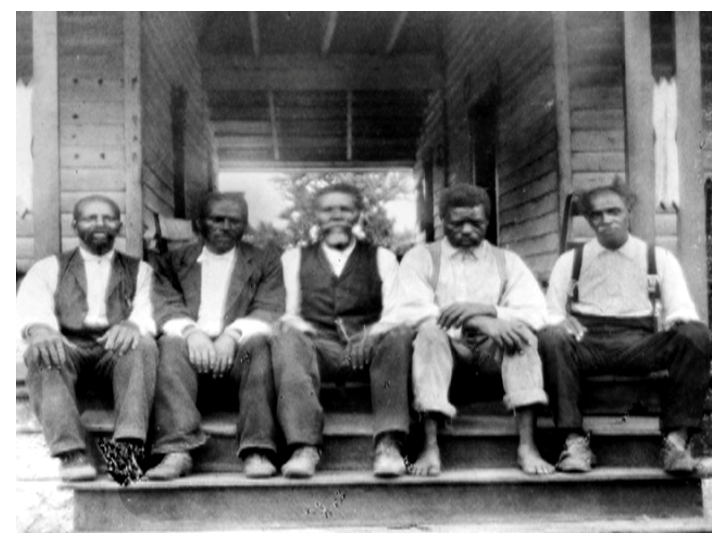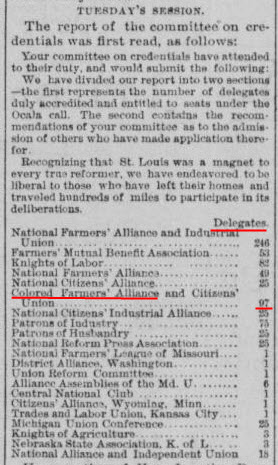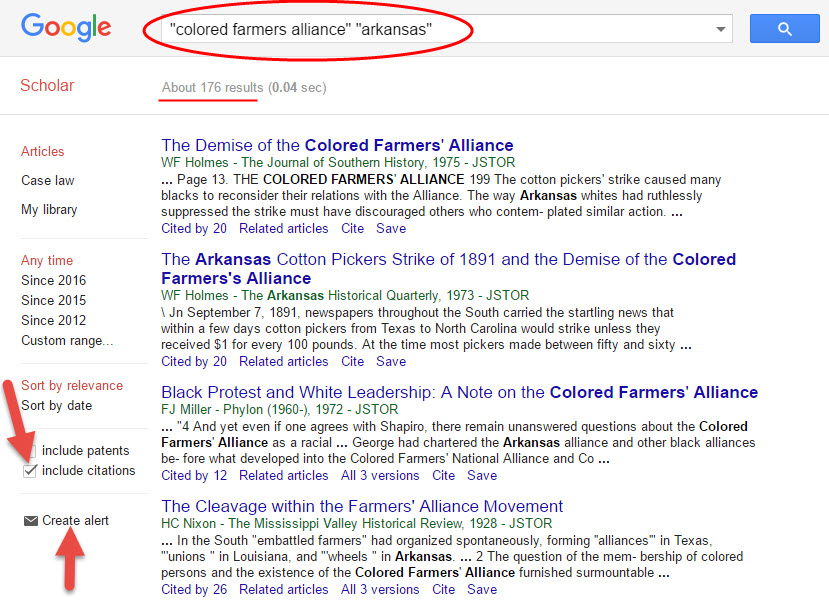Social history plays a significant role in successful genealogical research. The events of a particular time-frame shed new light on the lives of our ancestors and ultimately lead us to new finds. In this post, Gems Reader Trisha asks questions regarding her family’s ties to the Colored Farmers’ Alliance.

“The Colored Farmers’ Alliance.” NBC News. NBCUniversal Media. 29 July 2007. NBC Learn. Web. 22 January 2015.
Did a Member of the Family Belong to the Colored Farmers’ Alliance?
Our Genealogy Gems Editor, Sunny Morton, received the following email recently from Trisha:
I am researching my great-grandparents in Northeast Arkansas. The census records I have found so far list that my great-grandfather was a famer. So, I started looking up farming associations hoping that maybe he was a member and I could find out more information about him and possibly any relatives that lived nearby. I came across the Colored Farmers’ Alliance that was in existence from 1886- 1891 in the southern states, but I have only been able to find out basic general public information about this agency. Do you know if, or how, I can find an Arkansas member list or something similar? Any help or advice you can give me would be greatly appreciated.
The History of the Colored Farmers’ Alliance
The Colored Farmers’ Alliance was formed in 1886 in the state of Texas. A group of southern African-American farmers had been barred membership to the other Farmers’ Alliances and hoped by creating this group, they would be able to cooperatively solve the common problems of its members. The group also encouraged African-American farmers to become economically independent by purchasing homes and eliminating debt. [“Colored Farmers’ Alliance,” The Gilder Lehrman Institute of American History (https://www.gilderlehrman.org/history-by-era/populism-and-agrarian-discontent/timeline-terms/colore : accessed 28 Oct 2016).]
The organization took off and spread across the Southern United States. It’s peak membership was up to 1.2 million in 1891. However, the organization did not survive long. In 1891, the Colored Farmers’ Alliance called a general strike of African-American cotton-pickers and demanded a wage increase from 50 cents to $1 per hundred pounds of cotton. The strike failed and the group dissolved. [“Colored Farmers’ National Alliance and Cooperative Union,” Wikipedia (https://en.wikipedia.org/wiki/Colored_Farmers%27_National_Alliance_and_Cooperative_Union : accessed 28 Oct 2016).]
Pulling Together Some Answers
“Little detail is known about individual members of the Colored Farmers Alliance, including its leadership.”
Google Books
A search of colored farmers alliance delivers several results on the topic. Use search operators to help Google deliver even better results, by putting quotation marks around the search phrase “colored farmers alliance.” This instructs Google to return only web pages that contain that exact phrase. You’ll find more Google search strategies in my book The Genealogist’s Google Toolbox, which also includes an entire chapter on using Google Books for genealogy.
Here’s an example of one book I found called The Agrarian Crusade: A Chronicle of the Farmer in Politics by Solon J. Buck (1920).
Click here to see the entire search results list for the search query Colored Farmers Alliance in Google Books.
While I didn’t discover any references to actual member names beyond some of the leaders, Google Books certainly offers more depth and history on the Alliance.
Digitized Newspapers

Indian chieftain., March 03, 1892, Image 1 at the Library of Congress’ Chronicling America.
(The Indian Chieftan was published in Vinita, Indian Territory [Okla.]) 1882-1902
For more help on researching newspapers for genealogy, listen to my two part podcast series titled “Find Your Family History in Newspapers, Part 1 and Part 2.”

members named
Google Scholar

YouTube
It’s amazing what the family historian can discover from the comfort of their own computer. With so many valuable resources discovered through an online search, a well-prepared trip to the library or archive will prove even more fruitful.




